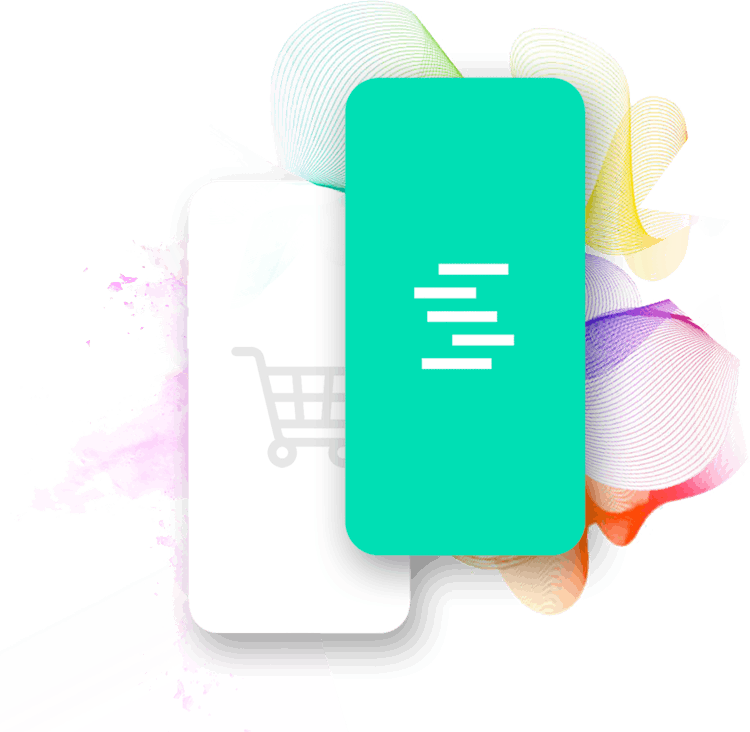When enhancing the customer experience for your online store, email is a crucial touchpoint to consider; email marketing is a valuable tool to nurture the relationship to customers and a great way to increase engagement and conversion. For every pound invested, email generates an average return of £42, according to the Data & Marketing Association.
We gathered ten great email marketing ideas for e-commerce. These useful tips from email marketing experts will help you to lower customer acquisition costs and increase customer lifetime value as well as retention.
1. Segment Your List
The easiest way to go about email marketing campaigns is the well-known one-size-fits-all approach. It may be effective for one-off campaigns. But in the long run, it can have a negative impact on audience engagement.
One way to keep your audience interested is through segmentation — dividing customers based on information such as who they are, where they’re located, what they’re interested in, and more.
As you can see in the example below, segmentation is what TRX, a company selling sports equipment (particularly popular among CrossFit fans and physical therapists), aims to do with an initial survey question in their email sign-up form. Knowing whether their subscriber is a fitness professional, someone who owns a gym, or maybe someone who just works out at home, will prove useful when crafting the most relevant offer.
TRX newsletter pop-up form for subscriber segmentation from the start.
(Tip by email marketing expert Michał Leszczyński from GetResponse)
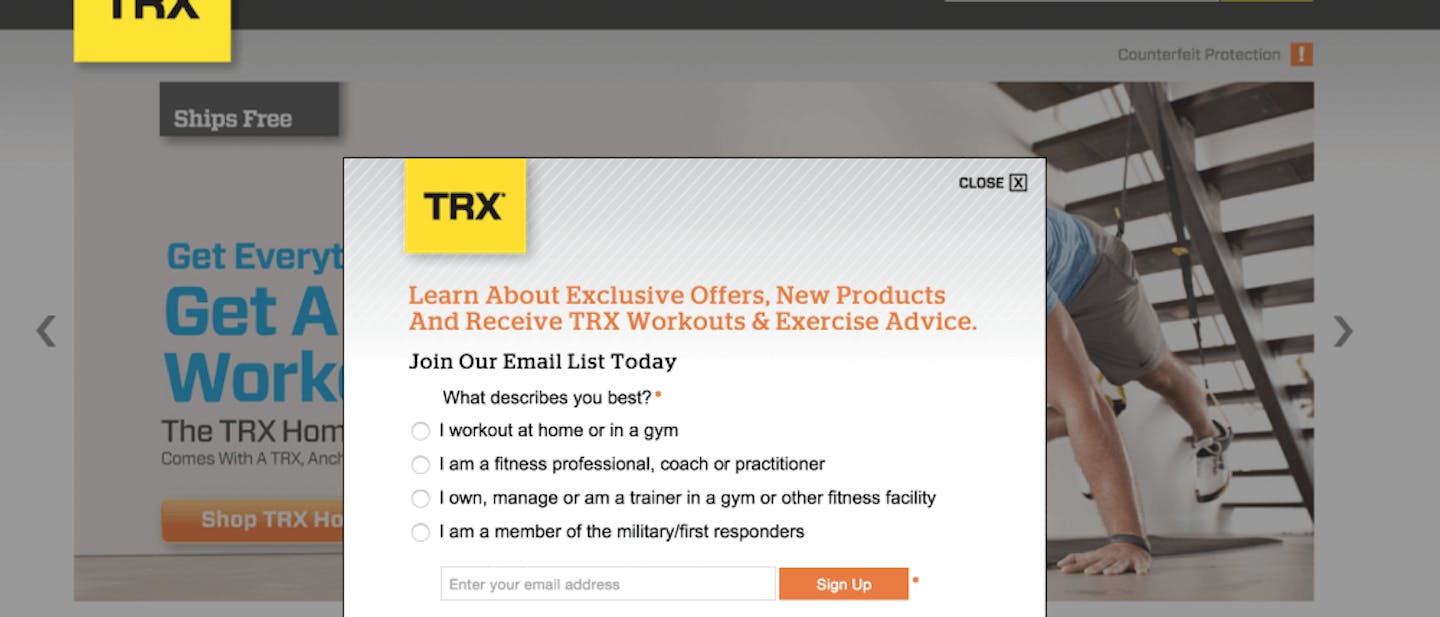
2. Onboard New Customers
If you look closely at your email open rates, you’ll notice that new users usually outperform those who have been on your list longer. That’s because when someone decides to join your mailing list, that’s when they’re the most interested in your offer.
The problem appears when new subscribers don’t take immediate action. They may not have made a purchase or visited your page yet, but that doesn’t necessarily mean they aren’t interested in your offer. Sometimes it’s that they lack motivation or don’t know what to do next.
To help new subscribers make decisions faster, use a process called customer onboarding. Send a series of emails, one at a time. Each covers the most important aspects of your store — information on how to place an order, ways to get in touch with customer support, details of the return policy, or your best-rated products.
Onboarding is also a good time to point new subscribers to other important URLs: your social media channels or a link to download your app and access the store on the go.
(Tip by email marketing expert Michał Leszczyński from GetResponse)
3. Use Email Sequences
Setting up email sequences is a sure-fire way to supercharge your email marketing. Not only does it automate a time-consuming process, but it also gives your campaigns a better chance of converting.
Whether you’re welcoming customers to your email list or sending offers to increase their purchase value, automated email sequences can drive major conversions that would otherwise have been left behind. Email Sequences can take an enormous burden off of you.
When combined with segmented email lists, triggered emails can ensure that highly targeted messages are being delivered to your leads and customers at the best possible moment to get results.
(Tip by growth marketer Sujan Patel from Rightinbox)
4. Ask Your Customers For Feedback
It goes without saying that knowing what your customers think about your brand is important. But how much is an opinion worth?Consider a statistic: 76% of consumers trust online reviews as much as recommendations from friends and family, says a study by BrightLocal.com.
Asking your customers for an opinion has many advantages. You can use reviews to learn more about your target audience and make your product better. Best of all, you can use them in your communications as social proof.
Below, you’ll see how a company called Mahabis uses customer reviews to present the true value their product offers. They use the exact words their audience uses, so their offer feels authentic and the brand is relatable.
Source: Social proof in a newsletter from Mahabis.
(Tip by email marketing expert Michał Leszczyński from GetResponse)
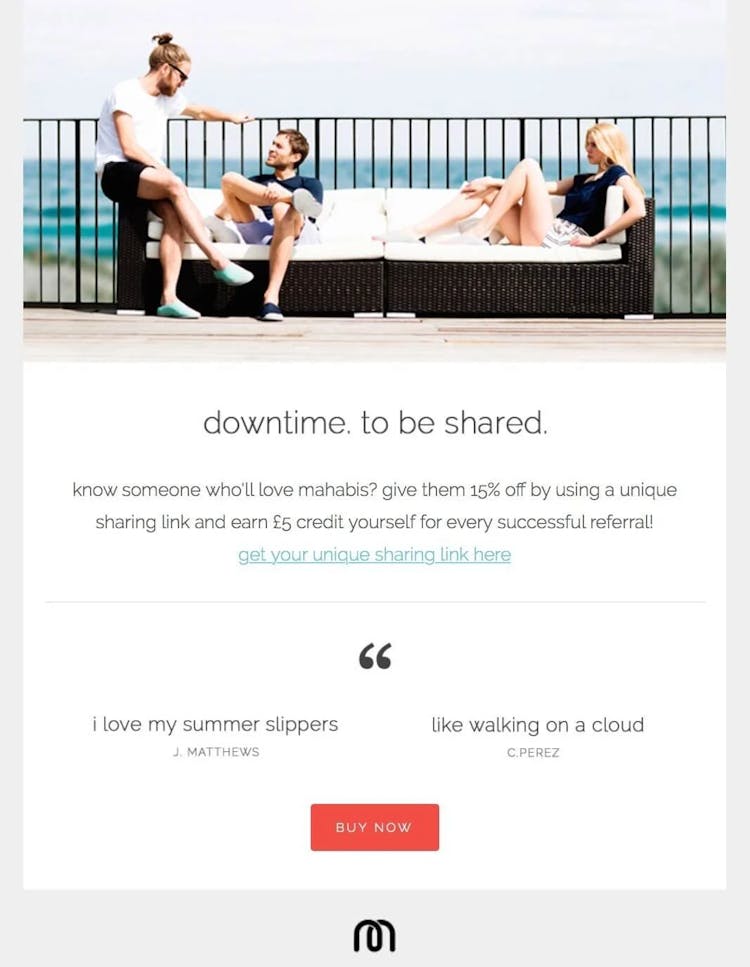
5. Retrieve Abandoned Carts
Although abandoned carts aren’t a problem in the offline world, most e-commerce businesses dread them. Not surprising — according to SaleCycle, over 79% of all online shopping carts are abandoned.
With all the resources you invest in acquiring new leads, it’s only natural you’d want to retrieve some of those who don’t finalize their order. You can do this using behaviour-triggered messages aimed at returning your customers to your store.
Cart abandonment emails are popular among online retailers. They’re effective and simple to implement, especially if the user’s reason for leaving the site isn’t related to dissatisfaction with the offer but some other distraction.
If you're interested in going an extra mile to retrieve the abandoned carts, this article will definitely be of help.
(Tip by email marketing expert Michał Leszczyński from GetResponse)
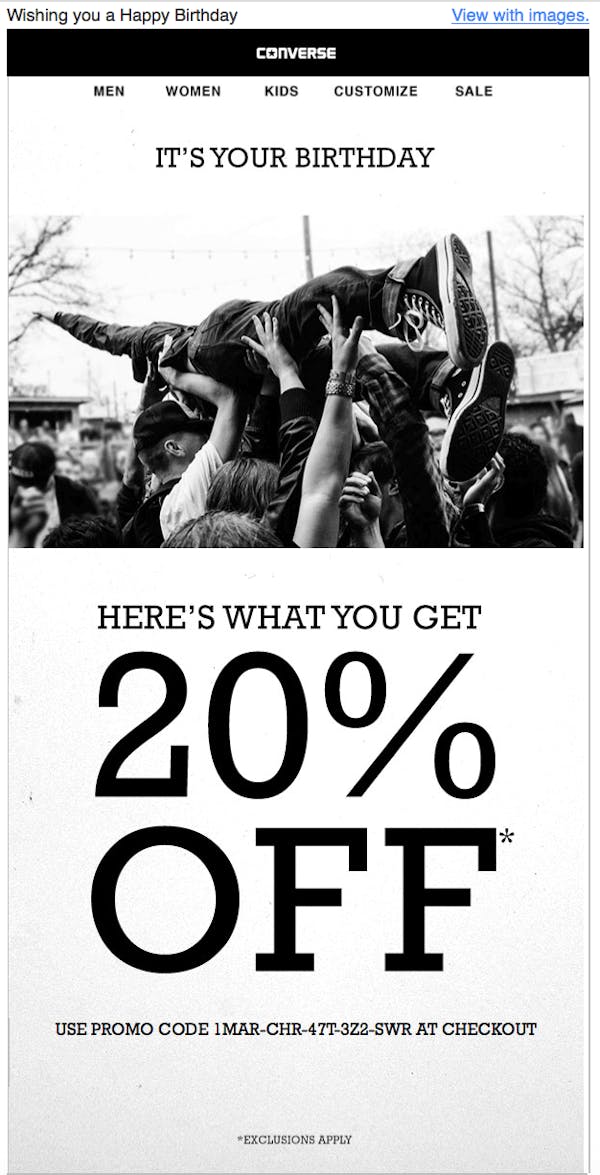
6. Send Birthday and Anniversary Emails
Everyone likes to receive gifts — whether from your family, co-workers, or even yourself. That’s why the customer’s birthday or anniversary can be a good opportunity to make a sale.
An automated email with a discount in honor of your customer’s birthday can strengthen their feelings toward your brand and make the offer feel personalized. On top of that, they already think they deserve a gift, so it’s easier to persuade them to purchase something for themselves.
Source: Birthday email from Converse with a 20% discount code.
(Tip by email marketing expert Michał Leszczyński from GetResponse)
7. Use Split Testing
Split testing is the best way to find the optimum email campaign. The great thing is that you can test a load of things: from name, subject line, content, call to action, send time and more.
- Test what works best:
- Fewer or more images
- CTA as a button or link
- ‘Shop now’ vs ‘Discover here’
- Bestsellers or hottest drops
- Blog placement – right or left?
(Tip contributed by email marketing expert Chris Cano from dotdigital)
8. Run Re-Engagement Campaigns
You’ve heard this before: Most marketers agree that it’s cheaper to retain your existing customers than to acquire new ones. So why not try to reactivate clients who have lost interest?
To re-engage dormant customers, decide on the right moment to consider them inactive. For businesses like fashion retailers, a lack of email opens for 90 days is a reliable signal that the user is uninterested. For others, like an online store selling cart parts, the period may be longer.
Once you’ve figured out when to consider your customer dormant, reach out to them. But don’t just send your regular offer. Make it special, personalized, and make sure the subject line stands out from other emails in their inbox.
Source: Re-engagement email from PotteryBarn.
(Tip by email marketing expert Michał Leszczyński from GetResponse)
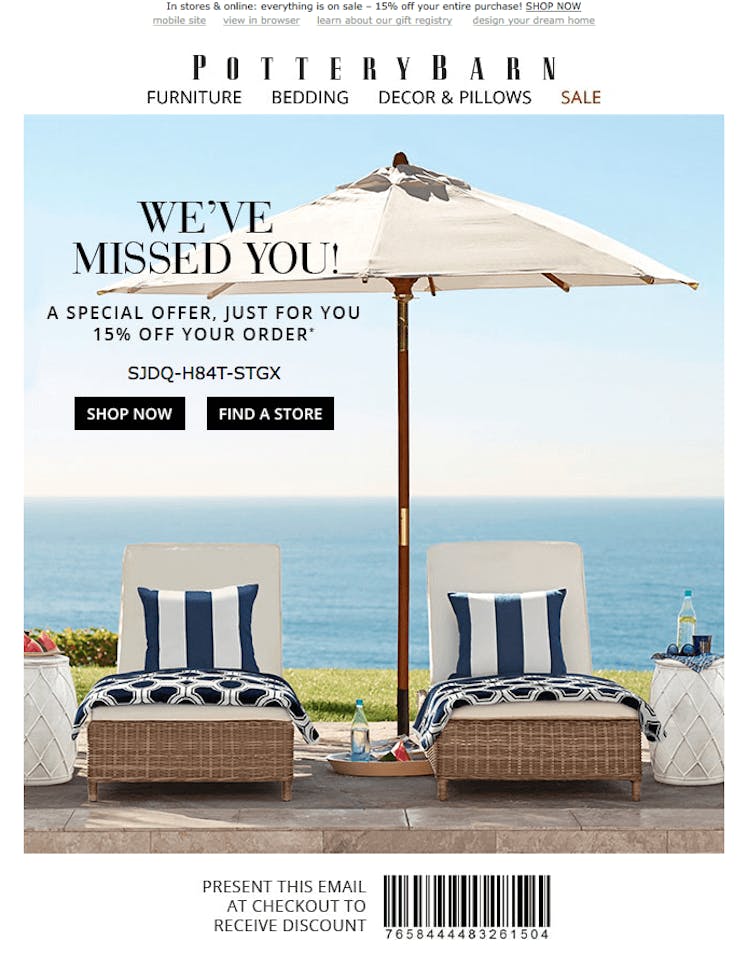
9. Create Dedicated Landing Pages for Email Marketing
Often brands create great stories around their products and services in email campaigns but then direct users to generic product grids. With this move, brands risk a high bounce rate as redirected users might not find the products that caught their attention in the emails and choice paralysis kicks in – leaving a frustrated user.
Instead, brands should create dedicated landing pages for their email campaigns. This way, they can enhance their storytelling and engage the visitor with a colourful mix of different content types such as buying guides, lookbooks or tutorials.
(Tip by content marketing expert Chris White from Styla)
10. Send Recommendations
You know what your customers have purchased or added to their wish list. You also know what goes well with those products or what others have purchased with those items. Why not send relevant offers with product recommendations?
Recommendation emails work because recipients instantly know the offer is tailored to their needs. That it’s a product they searched for and hoped to buy, but it was out of stock. Or simply that it will look great with what they already bought and fell in love with.
Take this opportunity to personalize your offers. Use the information you’ve collected about your audience and send something they wouldn’t want to miss.
Summing up
Email marketing isn’t just about sending the same offer to every customer. It’s about building relationships, learning what your customers like, and discovering what they respond to. We hope these ten email marketing ideas help you to achieve this.




